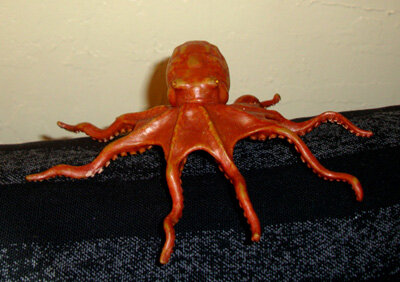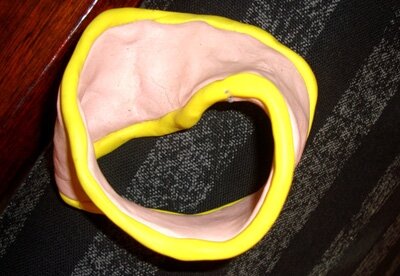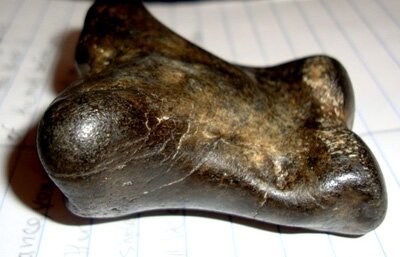Detail of painting by Tim O-Brien from the Nautil.us site.
There are as many ways to teach Theory of Knowledge as there are TOK teachers. No single individual has expertise and ease in every aspect of program. Nor is anything like universal coverage possible within the 100 hours allocated to TOK.
The Core Theme and all five Areas of Knowledge are compulsory along with a focus on two of five Optional Themes. Accordingly, teachers must make selections and teach to their strengths. The brave model the spirit of TOK by venturing outside “comfort zones.”
Beginning (and ending) a TOK course with confidence and clarity is important. It may take several weeks before students are able to take in what the course is really all about. Facility with exploring Knowledge Questions and becoming comfortable in the realm of meta-cognition will only happen over time.
A TOK classroom is nothing if not generative. TOK explores how Knowledge is acquired, both as individual quest and as dynamic social activity. Risking ideas in the public arena is key. Students are encouraged to discover and express their views and to share ideas with others and to listen to and learn from what others think.
TOK is all about asking questions and daring to know for oneself. It is subversive in the sense that it discourages swallowing piecemeal conventional ideas of the day or the prepackaged opinions of peers or authority figures.
For the meta-curious visitor I have created Who wants to know? This is an introductory section that touches upon certain inescapable aspects of the human predicament that have undergirded my own approach to teaching TOK.
FIRST TOK CLASS—
ExplorE mysterY OBJECTS BY TOUCH ALONE
In the first minutes, even before introducing myself or going through the class list, I engage the class by actually doing some TOK. I start by asking the students to come, one at a time, to the front of the class, to identify by touch alone, three mystery objects hidden in pillow cases. One of my students referred to this as “Ready… Fire, Aim!”
Although I would urge you only to mention it to your class at this very early stage; the choice of three specific, real-world objects is, of course, a foreshadowing of the TOK Exhibition. The game is on!
Obviously you will choose your own objects. Try to make your selection interesting and moderately challenging. Here for fun are my current choices:
1. Plastic Octopus—laughably easy to identify
2. Möbius strip made with oven baked modeling clay—a famous mathematical object with only one side and only one edge. Students encountering the Möbius strip for the first time should be given the opportunity make one of their own by joining a strip of paper after giving it a half twist. The emergent topological properties are quite counterintuitive. The Möbius strip combines a Kindergarten level of hands-on fun with an introduction to an arcane branch of pure mathematics. It is well worth a five minute detour after the reveal.
3. Real fossilized knuckle bone of extinct horse found in Patagonia—is the most obscure and most challenging object. From several angles it looks like an erotic human figurine and appears to have many of the characteristics of fine Inuit sculpture. Despite the powerful resemblance to a miniature, hand-held sculpture, the bone is a found object rather than a human artifact.
I ask students not to confer and to write their responses on a small piece of paper and hand it to me. Much to the chagrin of students who think they have guessed correctly I refuse to show the objects until the following class. Tension and release and theatrical possibilities are heightened by the promise of nominal but very tasty chocolate prizes for the winners.
WhATEVER next?
Having broken the ice with the mystery objects activity, I briefly take the opportunity to point to the centrality of TOK in the IB Diploma subject hexagon, and its relationship to CAS and the Extended Essay. I also reveal how the TOK experience resonates with aspects of the IB Learner Profile.
Only at this stage, do I move to personal introductions. It is a truism that we can’t really teach a class unless we make a concerted effort to get to know them. I jump start this with this confidential Getting To Know You Google Form.
Establishing Common Agreements for class discussion is the next task, emphasizing that much of TOK consists of exploring open-ended Knowledge Questions. Navigating multiple perspective is also a key element. We are all responsible for content and, especially in a diverse group, disagreement is very likely.
TOK EssentialS—NOT YEt
I reserve a formal introduction of the Core and Optional Themes and their interconnections with the various Areas of Knowledge for the second or third class. The Essay and the Exhibition may also get a first mention then. The four elements of the TOK framework (Scope, Perspectives, Methods and Tools, and Ethics) are introduced soon after.
Knowledge Questions
TOK Framework
12 TOK Concepts
TOK Exhibition and Essay
WHAT ARE YOUR STUDENTS ACTUALLY GOING TO DO?
TOKresource website pages contain engaging hands-on activities, counterintuitive stunts, and/or "happenings" that will kick-start purposeful, on-task, partner, small group, or whole class discussion.
I recommend that variations on the following ritualized discussion format be used throughout the TOK course:
Assigned time allocations as a constraint; pressure of being called upon at random to report back in public; and partner and small group combinations that force students to work with others, not necessarily in their friend group; all combine to generate a creative tension and sharp focus in the room.
Teachers are invited to appropriate and adapt the ideas shared on the site, rather than attempt to clone every detail. Choosing your own, conveniently at hand, three objects for the Explore mystery objects by touch alone activity is a perfect case in point.
“You shall no longer take things at second or third hand, nor look through the eyes of the dead, nor feed on the spectres in books,
You shall not look through my eyes either, nor take things from me,
You shall listen to all sides and filter them from your self…
Not I, not any one else can travel that road for you,
You must travel it for yourself.
It is not far, it is within reach,
Perhaps you have been on it since you were born and did not know…”
M.C. Escher (1963) Möbius Strip II. Original framed vertically. Woodcut in red, black and grey-green, printed from 3 blocks.
REFLECTIONS ON THE TOK MINDSET
A TOK outlook is the opposite of feeling intimidated or bewildered by knowledge that always seem to be owned by somebody else. The TOK experience can demystify much of what passes for knowledge in the various academic disciplines. By adopting this mindset, no work of art, literature or music; scientific announcement, historic controversy, mathematical argument, esoteric vocabulary, ethical conundrum or political complexity are forever off limits. If students develop an authentic sense of ownership of the vast interconnected edifice of human knowledge they will not feel alienated and pushed around by forces seemingly beyond their control.
Keeping these ideas in mind I tell the students unambiguously that it doesn’t matter how smart you think you might be compared to others in the room and it doesn’t matter what I, as the much older teacher, have read or think. What matters is your own participation in the questioning and the discussions and gradually deepening your own understanding. I tell them that ultimately even semester grades or final scores on the IB matrix are dwarfed by the importance of the critical thinking tools and mindset that they will take with them to college/university and beyond.
The students, as Walt Whitman stated, “contain multitudes.” They are far bigger than any program―even a great one like the IB Diploma! In two years time, when the dust clears on the prescribed exigencies and particular nuances of TOK, what will count are a deeply rooted capacity for critical thought and the confidence to act―to be a player in the real world and actually make some kind of difference.
Self portrait (2013)—Oil painting by the author







